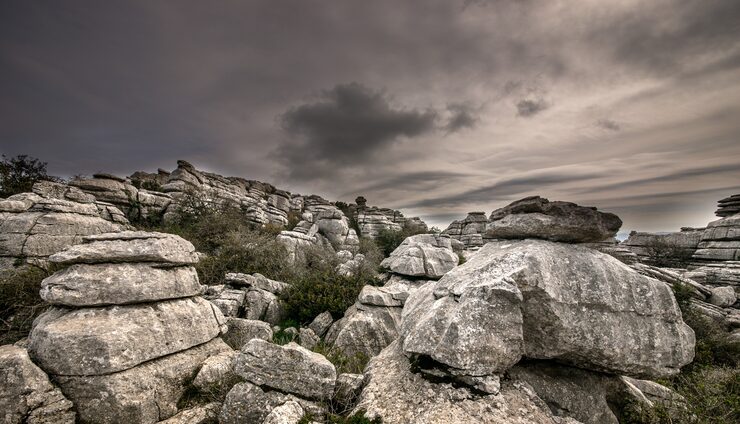Distribution
The tropical monsoon climate is mainly found between 5° and 25° latitude north and south of the equator. It is strongly influenced by seasonal winds (monsoons) that reverse direction between summer and winter.
Major tropical monsoon regions include:
- South and Southeast Asia – India, Bangladesh, Myanmar, Thailand, Vietnam, Philippines
- Parts of West and Central Africa – Nigeria, Ghana, Ivory Coast
- Northeastern South America – including parts of Brazil and Guyana
- Northern Australia
This climate type is typically found along eastern margins of continents in the tropics.
Climatic Conditions in Tropical Monsoon Lands
Tropical monsoon lands experience alternating wet and dry seasons due to the seasonal reversal of winds. Key features include:
- High temperatures throughout the year (average around 25°C–30°C)
- Heavy rainfall concentrated in a few months (1000–3000 mm annually)
- Distinct seasons: a wet monsoon season, a hot dry period, and a cooler dry season
- Humidity levels are high during the rainy season but lower during the dry months
Rainfall is mostly due to the moisture-laden onshore winds blowing from the oceans during summer.
The Seasons of Tropical Monsoon Climate
1. Cool and Dry Season (Winter)
- Occurs during the low sun period (roughly from November to February)
- Dominated by offshore dry winds (retreating monsoon)
- Skies remain clear, humidity is low, and rainfall is minimal
- Temperatures are cooler compared to other seasons
2. Hot Dry Season (Pre-Monsoon)
- Comes just before the rainy season, typically from March to May
- Temperatures soar due to intense insolation (often above 40°C in some regions)
- Air remains dry; rivers and water bodies often dry up
- It is the most uncomfortable period due to extreme heat
3. Rainy Season (Southwest Monsoon)
- Arrives with the onset of summer monsoon winds (June to September)
- Winds blow from the sea, bringing heavy rainfall
- Most of the annual precipitation is received during this time
- Cloudy skies, high humidity, and frequent thunderstorms
The Retreating Monsoon
- After the peak of the rainy season, the monsoon winds start withdrawing in late September or October
- Winds reverse direction, now blowing from land to sea
- This period is known as the retreating monsoon
- In some regions like the Coromandel Coast (eastern Tamil Nadu), this season still brings rainfall due to northeast monsoon winds picking up moisture from the Bay of Bengal
The Tropical Marine Climate
The tropical marine climate is similar to the tropical monsoon climate but with some key differences:
- Found in island and coastal areas near the tropics like the Caribbean, eastern Central America, eastern Madagascar, Philippines, and parts of Queensland
- More evenly distributed rainfall throughout the year
- Temperature range is narrower due to the moderating influence of the sea
- Humidity stays high and there is no extreme dry season like in monsoon regions
This climate supports lush vegetation and stable agriculture due to consistent rainfall.
Tropical Monsoon Forests
These forests are sometimes called deciduous monsoon forests because trees shed their leaves during the dry season to conserve water.
Features:
- Less dense than equatorial rainforests
- Mixed vegetation – hardwood trees like teak, sal, bamboo, sandalwood
- Trees have thicker bark and longer roots to survive the dry season
- Rich biodiversity, but less than equatorial zones
These forests are heavily exploited for timber, fuelwood, and shifting agriculture.
Agricultural Development in Monsoon Lands
Agriculture in monsoon regions is closely tied to seasonal rainfall, and the cropping pattern depends on monsoon reliability.
1. Wet Paddy Cultivation
- Dominant in low-lying river valleys and deltaic plains
- Relies heavily on rain-fed irrigation or water-retention methods
- Labour-intensive, especially in countries like India, Bangladesh, and Thailand
2. Lowland Cash Crops
- Includes crops like jute, sugarcane, cotton, and tobacco
- Usually grown after the rice harvest or in drier lowland areas
- Depend on good drainage and fertile soils
3. Highland Plantation Crops
- Grown on cooler hill slopes with moderate rainfall
- Includes tea, coffee, rubber, cocoa
- Plantation agriculture is export-oriented and capital-intensive
4. Lumbering
- Though forests are rich, commercial logging is challenging due to:
- Poor accessibility
- Conservation issues
- Seasonal limitations
- Timber is extracted during dry months when roads are accessible
5. Shifting Cultivation
- Practiced by tribal communities in hilly and forested areas
- Land is cleared by slash-and-burn, crops are grown temporarily, then the land is abandoned
- Environmentally unsustainable but still common in remote regions of northeast India, Southeast Asia, and Central Africa




